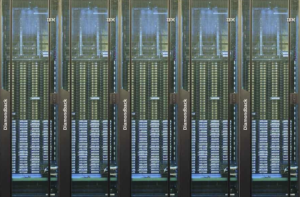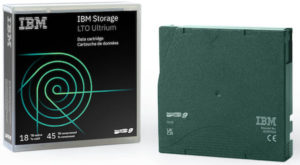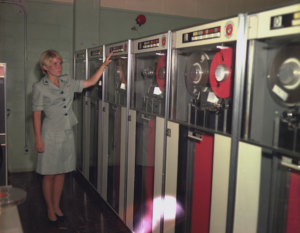
IBM Reveals New Diamondback Tape Library Archival Storage

IBM has introduced a new high-density archival storage system, the IBM Diamondback Tape Library. Unveiled at the 2022 Open Compute Project Global Summit, the new storage solution is physically air-gapped, meaning data is stored as an isolated backup copy with no physical network connection.
IBM says Diamondback provides a significantly smaller carbon footprint compared to flash or disk storage and is ideal for hyperscale enterprises needing to store hundreds of petabytes of data. The company notes this archival storage supports vertical markets that generate large amounts of unstructured and sometimes sensitive data such as big data analytics, cloud storage services, IoT, healthcare, and life sciences.
“Driven by an explosion in data volume, ransomware, and increased regulatory and sustainability requirements, hyperscale cloud providers are among the biggest consumers of tape storage and are predicted to drive tape capacity shipments to new levels in 2023,” said Phil Goodwin, research vice president, IDC. “IBM’s Diamondback Tape Library is the company’s latest solution for both traditional and cloud hyperscale enterprises. It is designed to deliver on customers’ needs for scalability, sustainability and security with simplicity and self-service.”
Diamondback was designed for three main benefits according to its maker, the first of which is sustainability. Reduced power and cooling requirements mean a lower carbon footprint over spinning disk storage. Diamondback users can store up to 69.5PB of compressed data in one eight-square-foot library with up to 1,548 LTO-9 cartridges. Tape storage may also be a more long-term product because it allows data storage for up to 30 years, according to a report sponsored by Fujifilm.
Enhanced security is also an advantage of tape storage as its air-gapped isolation is immune to network cybersecurity threats like ransomware. IBM additionally cites lower storage costs as another main benefit of tape, approximating its cost as one-quarter of the total cost of spinning disk and public cloud archival services.
“With data breaches and ransomware attacks now a constant threat, we are seeing hyperscale enterprises increasingly turning to the data resilience provided by IBM Tape solutions,” said Scott Baker, VP and CMO of IBM Storage. “The IBM Diamondback Tape Library provides critical protection against a variety of threats, helping minimize data center floor space requirements and organizations’ carbon footprint. It’s part of the end-to-end data protection and security solution that IBM can deliver.”
Other notable features of Diamondback include its fast deployment, as IBM says users can deploy over 27PB of storage in less than 30 minutes from time on floor to power up. The company notes the solution also provides increased read and write performance with 15% higher drive density compared to the older IBM TS4500 L55 tape library.
Diamondback builds upon IBM’s tape storage legacy. One of the company’s oldest tape storage solutions, the IBM 729 Magnetic Tape Unit, was introduced in 1959. The unit used 0.5-inch magnetic tape up to 2400 feet long wound on reels with a 10.5-inch diameter.
Related Items:
IBM Announces Addition of Red Hat Storage to IBM Offerings
Harvard’s New Data Storage Is to Dye For, Avoids DNA Storage Pitfalls
IBM Storage Breakthrough Paves Way for 330TB Tape Cartridges





























